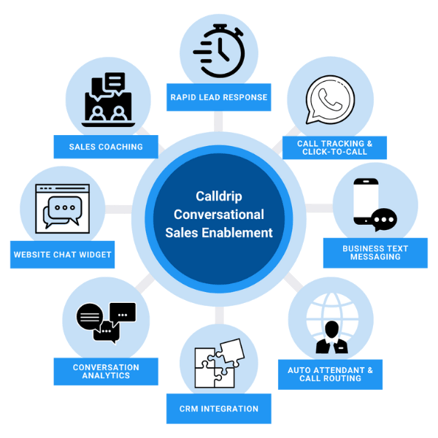As a modern sales leader, chances are you’ve heard the term “sales enablement.” Sales enablement is a strategy all about empowering your sales team with the right resources and processes to be successful.
In this blog, you’ll learn key statistics about sales enablement that can help you enhance your sales performance.
Sales enablement is all about understanding your ideal customers, and mapping your sales process and resources to meet their needs.
While sales enablement is a sales strategy, it typically also involves marketing. It may be helpful to chat with your marketing lead about how to collaborate to implement sales enablement.
Now, onto the data points!
Sales Enablement Statistics
- Sales enablement has recently seen a 343% increase in adoption over the last five years. (G2 Learning Hub)
- The global sales enablement market is growing; in fact, it’s projected to surpass $3B by 2026. (360 Research Reports)
- For sales enablement to be successful, your strategy needs to fit your lead generation. After all, about 50% of businesses say inbound marketing strategies, such as forms, are their primary source of leads. (HubSpot)
- Sales enablement is designed to ensure your sales team is empowered to meet the needs of your customers. In fact, approximately 66% of customers expect companies to understand their needs and expectations. (Salesforce)
- A value-based sales efforts (such as sales enablement) is correlated to growth. In fact, almost 90% of high-growth companies take a value-based approach to sales. (Global NewsWire)
- Almost 90% of consumers report purchasing due to the overall sales experience, rather than price or functionality. (G2 Crowd)
- This is relatively consistent across both consumer and business sales processes. Around 84% of business buyers are more likely to buy from sales reps that understand their goals. (Salesforce)
- During the sales process, email is simply not enough to add real value. Research indicates that at least a third - and up to 70% - of emails go unread. (Mailbird)
- More than three quarters of companies using sales enablement strategies have seen their sales increase between 6% to 20%. (G2 Learning Hub)
- 55% of C-Suite executives think sales enablement solutions are the most necessary technology investment to boost sales. (Dooly.ai)
The goal of implementing sales enablement is to improve your processes, resources, and strategies to make sales more efficient. For sales enablement to be successful, your strategy needs to prioritize building trust quickly and serving customers effectively.
Sales enablement serves to enhance the efficacy of your sales team, not replace them. After all, people buy from people!
 As we’ve seen, one of the best ways to build trust quickly is by sparking an authentic, friendly conversation with leads at their peak moment of interest.
As we’ve seen, one of the best ways to build trust quickly is by sparking an authentic, friendly conversation with leads at their peak moment of interest.
At Calldrip, we refer to this conversation-focused approach to sales enablement as “conversational sales enablement.” This approach enables you to build that positive human connection and add value - again, at scale. You can learn more about Conversational Sales Enablement in this quick two-pager; download it for free here.
Delivering a great customer experience via a conversational sales enablement strategy isn’t about having a service phone number that your prospects and customers can call. It’s also about rapid lead response, leveraging text messaging, and implementing sales coaching to improve your customer’s conversational experience. An all-in-one solution like Calldrip can help you level up your customer experience - and your sales.
Here at Calldrip, we’re committed to helping you improve your sales performance.
Calldrip leverages automation to help you do just that, with only the phone in your pocket!
Our all-in-one conversational sales enablement solution empowers your sales team to succeed. Hear from some of our customers around the world, and secure your demo here.